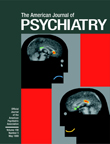Pramipexole in Refractory Bipolar Depression
Mr. A, a 50-year-old man with a 23-year history of bipolar I disorder and over 15 hospitalizations, had recurrent dysphoric manias and major depressions with reversed vegetative signs. There was a remote period of cocaine abuse and a dense family history of bipolar illness. Past manias had responded poorly to lithium, carbamazepine, and valproate monotherapies or combinations. Incidents of depression persisted despite regimens of bupropion; however, low doses of sertraline triggered mania. Depressions previously responded to ECT but resisted a course of 40 bilateral treatments. Mr. A’s condition was stable for over 1 year on a high-dose regimen of lamotrigine and clonazepam, until he was rehospitalized for anergic depression that was unresponsive to lithium augmentation. Pramipexole was begun at a dose of 0.25 mg/day and increased over 10 days to 0.75 mg/day. Within 1 week, marked improvement was noted in mood and activity. Euthymia was achieved, and Mr. A remained without side effects at his 8-week follow-up.Mr. B, a 33-year-old artist with a 15-year history of bipolar I illness and alcohol abuse (in remission), had 14 hospitalizations for both psychotic depressions and manias. His episodes improved minimally with lithium, carbamazepine, valproate, verapamil, and gabapentin alone and in combination with adjunctive typical neuroleptics and benzodiazepines. Sertraline, tricyclics, and one course of ECT were ineffective for his depressions. Nortriptyline and venlafaxine each induced dysphoric mania and cycling. Bupropion plus lithium and lamotrigine provided substantial improvement until he developed a tolerance after 2 months.Olanzapine, topiramate, and lamotrigine controlled mania and cycling until severe depression recurred, with reversed vegetative signs, prompting a trial of pramipexole. Mr. B was given a 1-mg/day dose of pramipexole; after 6 weeks, a marked antidepressant response occurred, and the drug was well tolerated except for transient, dose-related nausea. Subsequently, a brief depressive exacerbation resolved itself without medication changes. Mr. B’s functional improvement, with only low-grade depression and no cycling, continued through his 6-month follow-up.
References
Information & Authors
Information
Published In
History
Authors
Metrics & Citations
Metrics
Citations
Export Citations
If you have the appropriate software installed, you can download article citation data to the citation manager of your choice. Simply select your manager software from the list below and click Download.
For more information or tips please see 'Downloading to a citation manager' in the Help menu.
View Options
View options
PDF/EPUB
View PDF/EPUBGet Access
Login options
Already a subscriber? Access your subscription through your login credentials or your institution for full access to this article.
Personal login Institutional Login Open Athens loginNot a subscriber?
PsychiatryOnline subscription options offer access to the DSM-5-TR® library, books, journals, CME, and patient resources. This all-in-one virtual library provides psychiatrists and mental health professionals with key resources for diagnosis, treatment, research, and professional development.
Need more help? PsychiatryOnline Customer Service may be reached by emailing [email protected] or by calling 800-368-5777 (in the U.S.) or 703-907-7322 (outside the U.S.).

